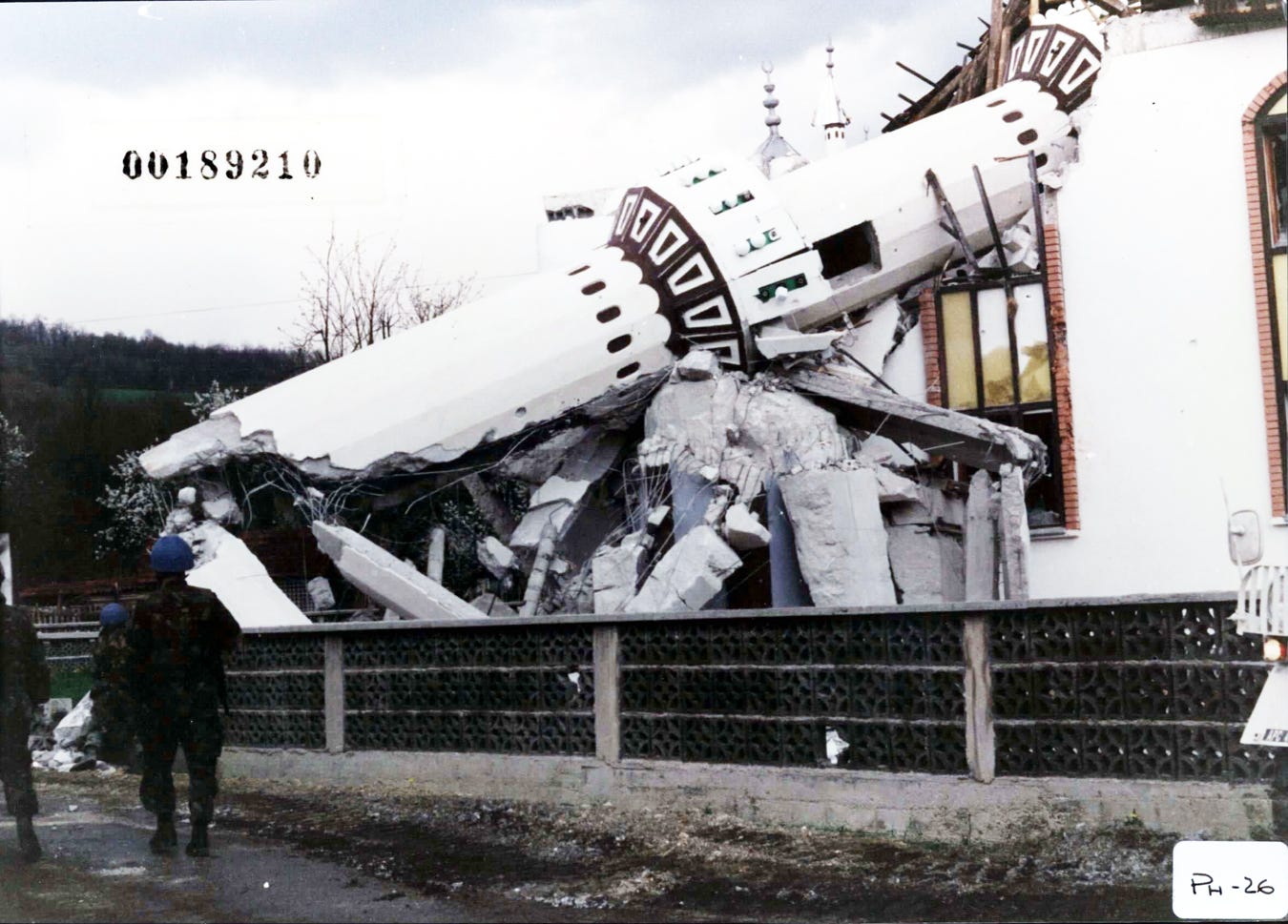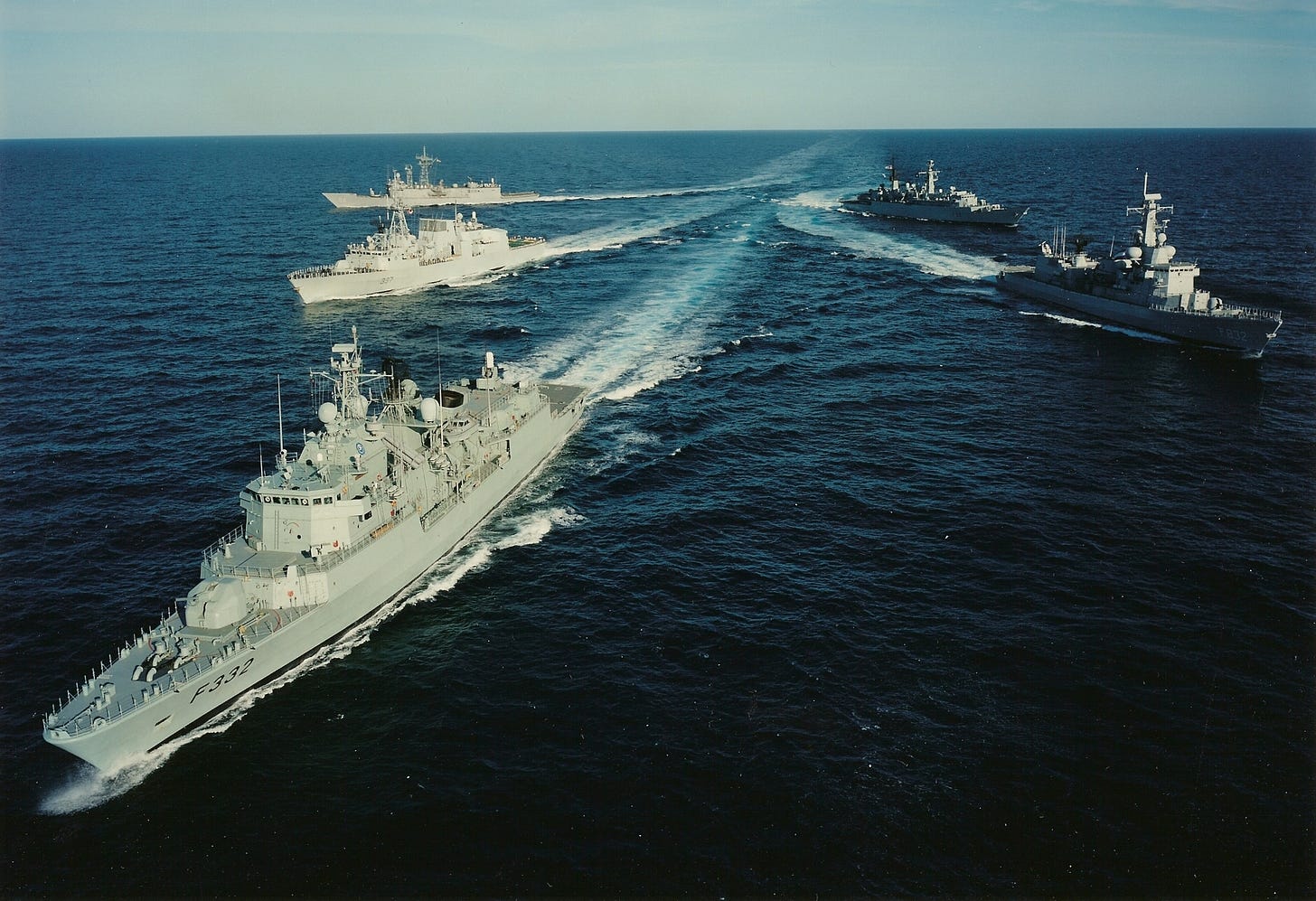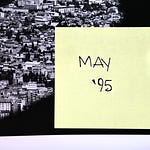April 1993.
The left bank of the Drina, the Bosnian side of the river that divides Serbia and Bosnia and Herzegovina, is almost completely in Serbian hands. Only Žepa, Goražde and Srebrenica resist, but are now on the verge of collapse [you can listen to the latest episode of BarBalkans - Podcast here].
Facing an imminent disaster, the President of Bosnia, Alija Izetbegović, is forced to sign the Vance-Owen Plan for peace.
However, the map of future Bosnia and Herzegovina is creating major problems on the Serbian side, with repercussions on Slobodan Milošević’ regime.
And in the new international military operations in the sky over Bosnia, NATO is becoming more and more important, despite the constant diplomatic turnarounds of the United States and Russia.
Srebrenica "safe area"
The first major event in April is the resignation of Cyrus Vance. The UN Special Envoy to Bosnia no longer tolerates US President Bill Clinton’s equivocal positions caused by the fear of the risk of sending soldiers to the Balkans.
Waiting for the appointment of his successor as UN Special Envoy for the Former Yugoslavia, Vance remains in charge to continue negotiations to implement the peace plan.
This is a task of immense difficulty. In addition to the fighting between Bosnian Serbs and Bosniaks (Bosnian Muslims), the relations between Bosniaks and Bosnian Croats alternates between armed standoff and open hostility.
In this context, one of the most heinous massacres is perpetrated in Central Bosnia by the Croatian Defense Council (the army of the Croatian Republic of Herzeg-Bosnia). In Ahmići - fifty kilometers from Sarajevo - 116 Bosnian civilians are killed in a planned attack, with the destruction of dozens of buildings and of the two mosques of the small town.
Hostilities between Bosnian Serbs and Bosnian Croats are also daily. But the Republika Srpska Army led by Ratko Mladić is more engaged in ethnic cleansing of Muslim-majority areas of Bosnia.
Srebrenica is the main target, and the timing of the new attacks shocks the international public opinion.
As soon as the UN Security Council’s Operation Deny Flight is triggered on April 12 to enforce a ban on military flights in Bosnian airspace, the Bosnian Serbs immediately respond bombarding the town.
Incendiary grenades and cluster bombs indiscriminately hit civilians to force the defenders to surrender. According to Mladić, the assault will end in three days, with the capture of the city.
In New York, Macedonia enters the United Nations with the name of Former Yugoslav Republic of Macedonia (FYROM), even though Greece refuses diplomatic recognition and imposes an economic embargo on Skopje. Meanwhile, a very delicate emergency meeting of the UN Security Council takes place on April 16.
In the event of Srebrenica’s surrender, the Vance-Owen Plan will risk failing permanently, due to Serbian disinterest in implementing the map of the future country.
This is why Resolution 819 defines Srebrenica a «safe area».
More specifically, this Resolution states that the city must be «free from any armed attack or any other hostile act». And 150 Blue Helmets are authorized to operate in the city.
However, the behind-the-scenes is worrying.
The UN Under-Secretary-General for Political and Peacebuilding Affairs, Marrack Goulding, is aware of the United Nations Protection Force (UNPROFOR)’s lack of capacity to handle the situation in Bosnia and Herzegovina.
It lacks both the will and determination for a real mandate in the warring country. And even the Blue Helmets are skeptical about the definition of Srebrenica «protected area».
Without the consent of the Bosnian Serbs - the besiegers, armed by Belgrade - Resolution 819 is only a statement of principle.
Also the controversial French UNPROFOR commander, General Philippe Morillon, realizes this. Therefore, he begins negotiations with Mladić and the general of the Army of the Republic of Bosnia and Herzegovina, Šefer Halilović.
The goal - as questionable as it may seem - is to convince the Bosniaks to hand over their weapons to UNPROFOR and the Bosnian Serbs to cease fire, allowing Blue Helmets to settle in Srebrenica.
However, the agreement on demilitarization of the town - reached on April 18 - is not fully respected by the defenders. Distrusting the besiegers’ promises, they hand over only a few obsolete weapons to the Blue Helmets.
In Srebrnica, the Canadian UNPROFOR soldiers are not well-considered, due both to the legacy of General Lewis MacKenzie and also to the mistrust that international soldiers will stop the Serbian hegemonic project.
The tug of war between Belgrade and Pale
In the meantime, the Serbian nationalist realm is not united, as shown by the political and diplomatic level. As always, divisions can cost dearly.
On April 3, the Bosnian Serb Parliament in Pale rejects again the Vance-Owen Plan. The motivation is the same as always.
More than a quarter of the territory conquered in almost a year of war would have to be abandoned. The dream of Greater Serbia would fade away: two out of three provinces assigned to the Bosnian Serbs would be disconnected from Belgrade.
Not even the Serbian President Milošević is moving his pieces as he would like to, while the Federal Republic of Yugoslavia is hit in further heavy economic sanctions.
The UN Security Council Resolution 820 echoes also in Russia, in particular among the nationalist and communist parties. They heavily attack President El’cin for the endorsement to these new sanctions, considered an offense against their Orthodox brothers.
The situation in Moscow is very delicate. To the point that the UN decides to temporarily freeze the sanctions against Belgrade until April 26, the date of the referendum on El’cin’s free-market reforms in the Russian Federation.
These events radicalize Bosnian Serbs nationalists. On April 25, they vote against the Vance-Owen Plan, while they launch heavy attacks on the battle ground, from Bihać to Brčko.
«Everyone is against us. Except for God, Russia and the other Orthodox brothers», the President of Republika Srpska, Radovan Karadžić, declares.

Almost simultaneously, the illusion ends both Bosnian Serbs and for Bosnian Muslims.
On April 25, the international arms embargo on the entire territory of the former Yugoslavia is renewed. The same arms embargo that has been creating enormous problems to the Army of the Republic of Bosnia and Herzegovina for many months.
On April 26, Karadžić’ belief that Russia is an ally of Republika Srpska goes up in smoke. In Moscow, President El’cin wins the referendum he has convened himself.
Avoiding all the possible negative repercussions of Resolution 820 on Russian institutional stability, sanctions against Belgrade are triggered.
The flow of goods to the Federal Republic of Yugoslavia is tightly controlled with «all necessary measures» by NATO and the WEU (Western European Union).
Moreover, Operation Sharp Guard will strengthen the mandate of the two organizations - already operating in the Adriatic Sea and the Danube - to Serbian and Montenegrin territorial waters, if the Vance-Owen Plan is not signed by May 5.
Meanwhile, all Yugoslav property are frozen in the United States and in Russia: «We will not protect those who oppose the world community».
On April 28, the Serbian Parliament immediately approves the peace plan, urging the Bosnian Serb Parliament to do the same. But the international sanctions are already crippling the Yugoslav economy.
Since May 1992, restrictive economical measures have been imposed due to Serbian involvement in the war in Bosnia.
For the first few months, they did not seem to have much effect. But months and months of war make the economic situation unsustainable, as the military funding to the Serbs of Bosnia and of Croatia reaches one third of the Serbian gross domestic product.
The price index of the basket of goods is 117% higher than the average pay of a Serbian or Montenegrin citizen and the unemployment rate reaches 80%. While an elite of about one million people is getting rich on war profits.
The Federal Republic of Yugoslavia is one of the 40 poorest countries in the world.
Milošević realizes that nationalist rhetoric is not working anymore. «If this is the price for getting sanctions lifted, we have to follow the cheapest way», he comments the need for a solution to the Bosnian crisis.
This does not mean abandoning the Greater Serbia project, just a paradigm shift: getting there step by step. The Bosnian Serb President Karadžić does not understand this strategy and Milošević struggles to convince him. As shown by a letter written together with the President of Montenegro, Momir Bulatović, and the President of the Federal Republic, Dobrica Ćosić:
«This is not the time for patriotic competitions. It is the time for well-thought, far-sighted and courageous decisions. A useless war can only bring misfortune and mourning».
If you know someone who can be interested in this newsletter, why not give them a gift subscription?
Here is the archive of BarBalkans - Podcast:
And here you can find a summary of the past years:



















Share this post